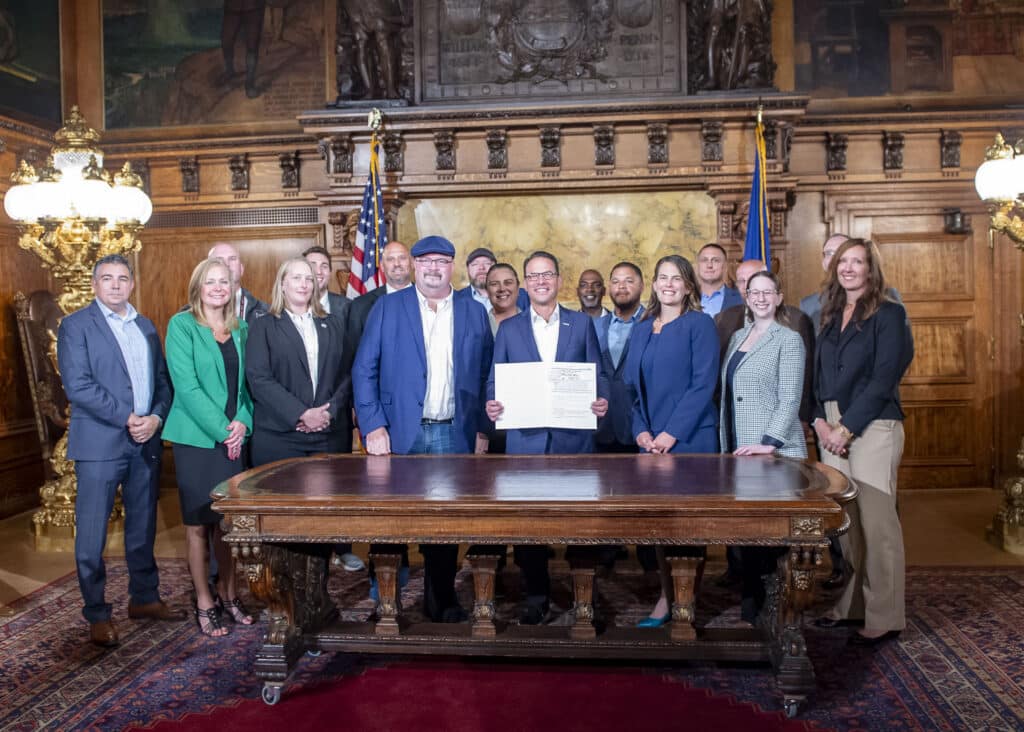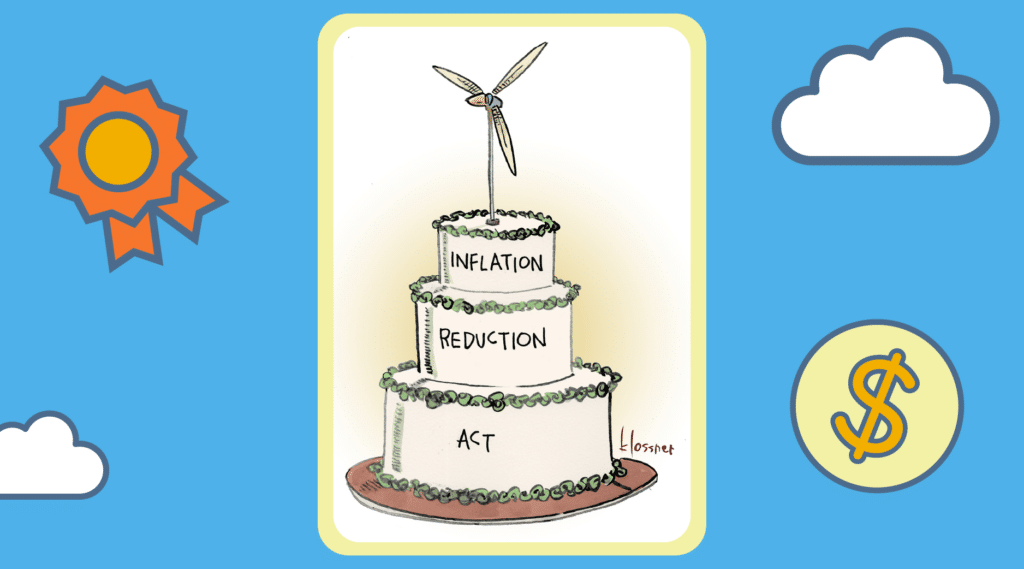This article is from the April 28, 2021, issue of Flip the Script, a weekly newsletter moving you from climate stress to clean energy action. Sign up here to get it in your inbox (and share the link with a friend).
President Biden is about to hit Day 100 in office, and so far, it’s been a pretty impressive run. The federal government is making unprecedented progress in laying the groundwork for a clean energy future, including through rapid-fire policies, funding, and expertise. The administration is putting important steps in motion—both domestically and internationally—to get the country on to a low-carbon path. We should be exhilarated by this progress… but we also need to keep the momentum going.

Progress on the home front
Biden didn’t skip a beat after his inauguration, signing into law a series of executive orders that have since shaped the domestic climate and energy agenda. One of his first directives, on “protecting public health and the environment and restoring science to tackle the climate crisis,” calls on the country’s top departments to immediately review any harmful regulatory rollbacks of the previous administration and revokes both approval for the Keystone XL gas pipeline and the opening of Arctic waters to offshore oil drilling. It also calls for federal agencies to start measuring the “social cost of carbon”—that is, the full impacts associated with greenhouse gas emissions—when evaluating different policy proposals.
A week later, Biden built on this momentum by issuing another executive order on “tackling the climate crisis at home and abroad.” The order will mean looking at everything in the daily workings of the federal bureaucracy with a climate lens, from procurement to policymaking. It also means assembling the right expertise. In addition to creating two high-level positions to lead and coordinate his climate agenda—the National Climate Advisor (Gina McCarthy) and the Special Presidential Envoy for Climate (John Kerry)—Biden has surrounded himself with a slew of highly qualified cabinet and agency leaders, including at the Environmental Protection Agency and the departments of energy, interior, transportation, and agriculture.
Clean energy is the lynchpin of many of these efforts. As new energy secretary Jennifer Granholm has noted, her department’s mandate is to “kick…into hyperdrive” the science and innovation that’s needed for the U.S. to achieve a carbon-free electricity sector by 2035. Biden has called for massive investment in clean energy tech, including wind turbines, solar panels, battery storage, energy-efficient appliances, grid infrastructure, and electric cars (including the conversion of all government fleets to zero-emission vehicles). He’s also called on the private sector and everyday folks to join in the effort, including through the development of a new Civilian Climate Corps that would also create jobs.
Legislative action has been a little trickier, given the Democrats’ slim majority in Congress. The American Rescue Plan, signed into law in March, provides a massive economic stimulus to support COVID-19 recovery, but also includes substantial climate, anti-poverty, and equity measures. Several other high-dollar Biden legislative packages also have climate at the center, though they haven’t yet made it into law. For example, the American Jobs Plan and the American Families Plan (a combined $4 trillion) form a substantial part of the president’s “Build Back Better” agenda and aim to revitalize the economy through job creation and infrastructure while also prioritizing the clean energy transition and environmental and climate justice. Meanwhile, the White House’s $1.5 trillion budget request calls for substantial increases in funding to support Biden’s climate agenda.

Getting back in the global climate game
Biden’s 100-day scorecard is also laudable on the international front. With U.S. greenhouse gas emissions expected to rise again sharply this year (following a COVID-induced slowdown), the administration has shown its eagerness to reengage the country in global climate action. Among Biden’s first acts as president was to immediately recommit the U.S. to the Paris Agreement, which aims to limit global climate change to below 1.5 degrees Celsius this century.
In big news last week, the White House hosted dozens of world leaders at a virtual climate summit, where Biden announced the new U.S. commitment to cut its emissions by half over the next 10 years, with the goal of achieving a net-zero emissions economy by 2050. This is by far the most ambitious climate goal the country has ever set, nearly double the target set by the Obama administration in 2015. (However, it’s still below Europe’s target of a 55 percent emission reduction, and some argue we’ll need cuts of nearly 60 percent to actually reach the Paris goals.).
The U.S. is the world’s second largest emitter of greenhouse gases (contributing around 15 percent of the global total), but Biden recognizes the need to engage other countries—especially China, the top emitter—in tackling the climate challenge. “No nation can solve this crisis on our own,” he said. “All of us, and particularly those of us who represent the world’s largest economies, we have to step up.” Climate envoy John Kerry and his Chinese counterpart recently pledged to work together on climate, and Biden also has committed financing for international climate efforts to help other countries get up to speed.

The path forward—forces for and against progress
This all sounds amazing—but can it all really happen? The Biden administration plans to meet its international climate commitments through the exact steps that it’s already taking on the domestic front—that is, prioritizing the transition to clean electricity, boosting energy efficiency, and promoting electric vehicles (as well as expanding “carbon sinks,” like forests and agriculture). The good news is, many of the technologies exist, and none of this is expected to involve sacrifice. As climate advisor Gina McCarthy recently told NBC, “Clean energy is working in every region, and it’s less expensive.”
But getting there will be a struggle, given current political realities. Congress controls the purse strings, and Republicans have largely opposed new spending measures and tax increases. Even if climate-related legislation passes, it will likely face legal challenges, especially in a court system that’s become a lot more conservative. Meanwhile, the U.S. will face difficulties both living up to its own pledges and getting other countries (including China) to follow through on their ambitious commitments as well.
Fortunately, Biden has a few things going for him. Key among them, according to Tanja Srebotnjak, an environmental expert at Williams College, is that he’s learning from earlier lessons by “reframing climate action as a jobs, competitiveness, and infrastructure issue and taking advantage of executive powers and favorable rules in Senate legislative procedures.” Biden is a seasoned politician—he has a clear view of what needs to happen to address the climate crisis in the current decisive decade, and he’s surrounding himself with the folks who can make it a reality. We’ve got the best chance yet to set our country on the path to clean energy and climate resilience.















